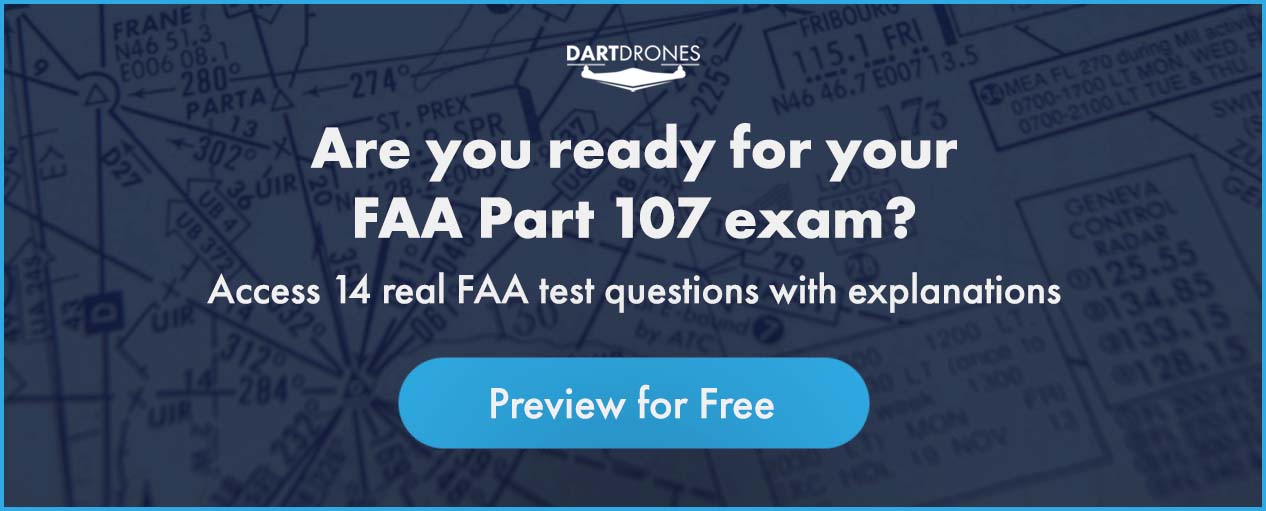The post National Drone Laws – What are they? appeared first on DARTdrones.
]]>First, there are the federal drone rules that are established by the Federal Aviation Administration (FAA). These rules are broken into subsets based on the type of drone pilot you are.
Let’s take a look at the FAA drone pilot rules as they apply to different types of drone pilots.
Recreational Drone Pilot
- Fly your drone for your enjoyment only. This defines flying a drone for recreational purposes.
- Always keep your drone in visual line of sight (VLOS) or use a visual observer to keep an eye on it with you.
- Never interfere with manned aircraft and always give way.
- Fly at or below 400 feet in controlled airspace and use resources like DroneZone and LAANC to make sure you’re in compliance.
- Fly at or below 400 feet in uncontrolled airspace (Class G).
- Coming soon is the Recreational UAS Safety Test (TRUST), so be sure to take that test when it comes available and retain proof of passage.
- Be sure to register your drone, mark the aircraft with the registration number and keep the certificate with you whenever you’re flying.
- Be a responsible drone pilot by not operating your drone in a dangerous manner. This includes interfering with law enforcement and emergency responders, and never fly under the influence of drugs or alcohol.
Be aware that a breach of any of these rules may subject you to FAA enforcement.
Commercial Drone Pilot
If you’ve studied for, taken, and passed your FAA Part 107 drone pilot test, you can operate a registered drone weighing less than 55 lbs as a commercial drone pilot. At this point you can make money with your drone. A commercial drone pilot must adhere to the same rules as a recreational drone pilot, with a few additions. The FAA has compiled a summary of the Part 107 drone rules here. Since the publication of those rules, there have been a few changes with regards to drone flights at night and flights over people.
The FAA advises that “The Operations Over People rule became effective on April 21, 2021. Drone pilots operating under Part 107 may fly at night over people, and moving vehicles without a waiver as long as they meet the requirements defined in the rule. Airspace authorizations are still required for night operations in controlled airspace under 400 feet.”
Public Safety and Government Drone Pilots
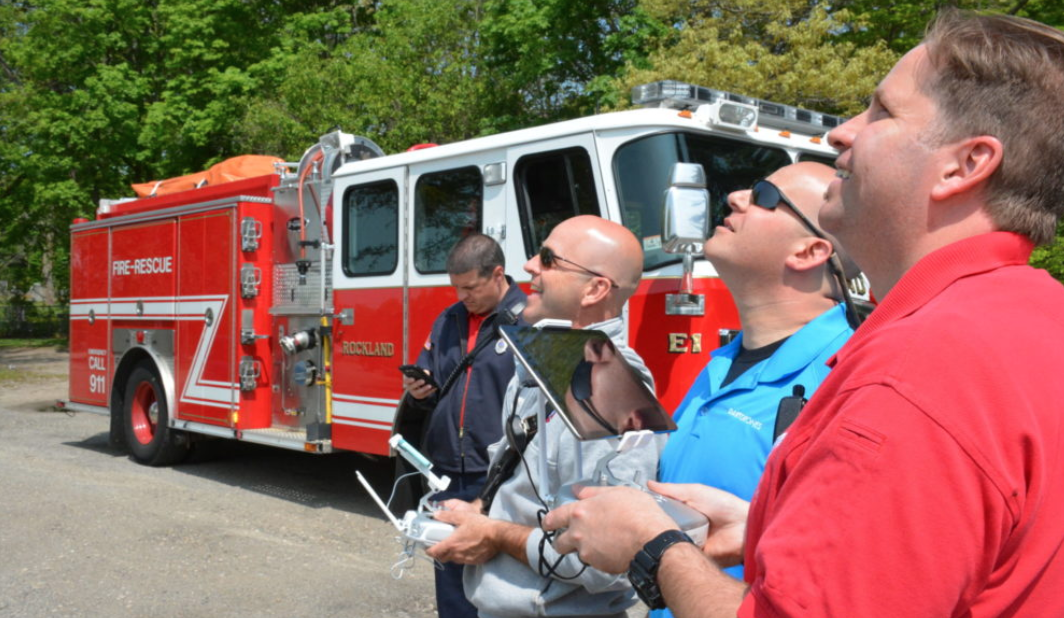 Public safety and government officials have two options for operating a drone under 55 lbs. A drone pilot could hold an FAA Part 107 pilot certificate, or he or she could maintain a Certificate of Waiver or Authorization (COA) to be able to fly a drone for governmental purposes. If you’re wondering if your organization qualifies for a COA, check out this article regarding COAs to get details about how to go about obtaining one.
Public safety and government officials have two options for operating a drone under 55 lbs. A drone pilot could hold an FAA Part 107 pilot certificate, or he or she could maintain a Certificate of Waiver or Authorization (COA) to be able to fly a drone for governmental purposes. If you’re wondering if your organization qualifies for a COA, check out this article regarding COAs to get details about how to go about obtaining one.
The FAA has put together this public safety toolkit with associated documents and links.
Educational Drone Pilots
There are a couple considerations for flying drones for educational purposes. The “Limited Exception for Recreational Flyers and Community-Based Organizations” allows that a pilot may fly a drone without obtaining a Part 107 drone license if the flight is for recreational purposes only. The rules here are the same as the recreational drone flight rules. And of course you can always earn your FAA Part 107 drone pilots license and fly for educational purposes.
State Drone Laws
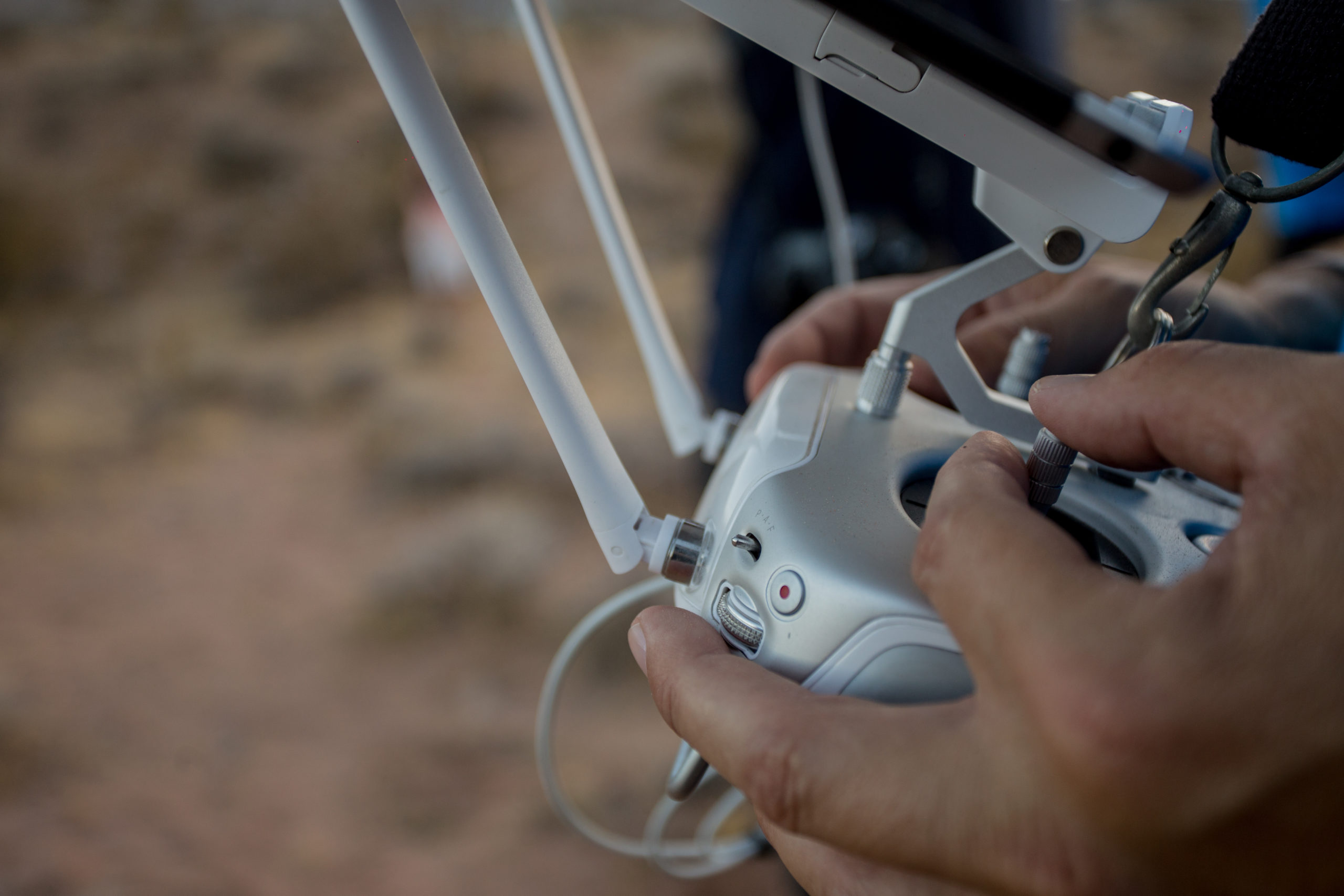 In addition to adhering to the federal drone laws, states can make their own drone rules at the state level. The overwhelming majority of these laws pertain to the use of drones by law enforcement and the use of footage captured, unlawful surveillance of persons where reasonable privacy is expected, and scouting and tracking game animals for hunting purposes.
In addition to adhering to the federal drone laws, states can make their own drone rules at the state level. The overwhelming majority of these laws pertain to the use of drones by law enforcement and the use of footage captured, unlawful surveillance of persons where reasonable privacy is expected, and scouting and tracking game animals for hunting purposes.
Most states also prohibit flying drones around critical infrastructure and most certainly prohibit drones from interfering with emergency services. States can also prohibit the use of drones in state parks and designated wilderness areas. There is often signage at entrances to state parks that will tell you if drone operation isn’t welcome.
As each state has different laws pertaining to its unique situation, it is important to do your due diligence and research those requirements and limitations prior to flying your drone.
In 2020, the National Conference of State Legislatures (NCSL) met and discussed recent state drone legislation enacted by several states. The result was 11 new pieces of legislation regarding drone laws spanning the country including Florida, Idaho, Massachusetts, Minnesota, Missouri, South Dakota, Vermont and Virginia. The following list from NCSL summarizes the legislative decisions on state drone laws:
“Four states—Florida, Idaho, Minnesota and South Dakota—allowed UAS operations by emergency management workers, including wildfire management.
Two states—Minnesota and Missouri—prohibited UAS flying over property, including correctional and mental health facilities and open-air facilities such as sports stadiums.
Two states—Idaho and Minnesota—permitted law enforcement agencies to operate UAS for specified purposes, including traffic crash reconstruction, search and rescue missions, and training purposes.
One state—Vermont—prohibited law enforcement from operating UAS while using facial recognition, except for purposes such as search and rescue and assessing wildfires, floods and storms.
Three states—Florida, Massachusetts and Virginia—appropriated funds for UAS-related certifications, programs and public-private partnerships.
One state—Virginia—empowered localities to regulate the takeoff and landing of UAS on property owned by the locality. Previously, localities were preempted from regulating UAS.”
Local Drone Laws
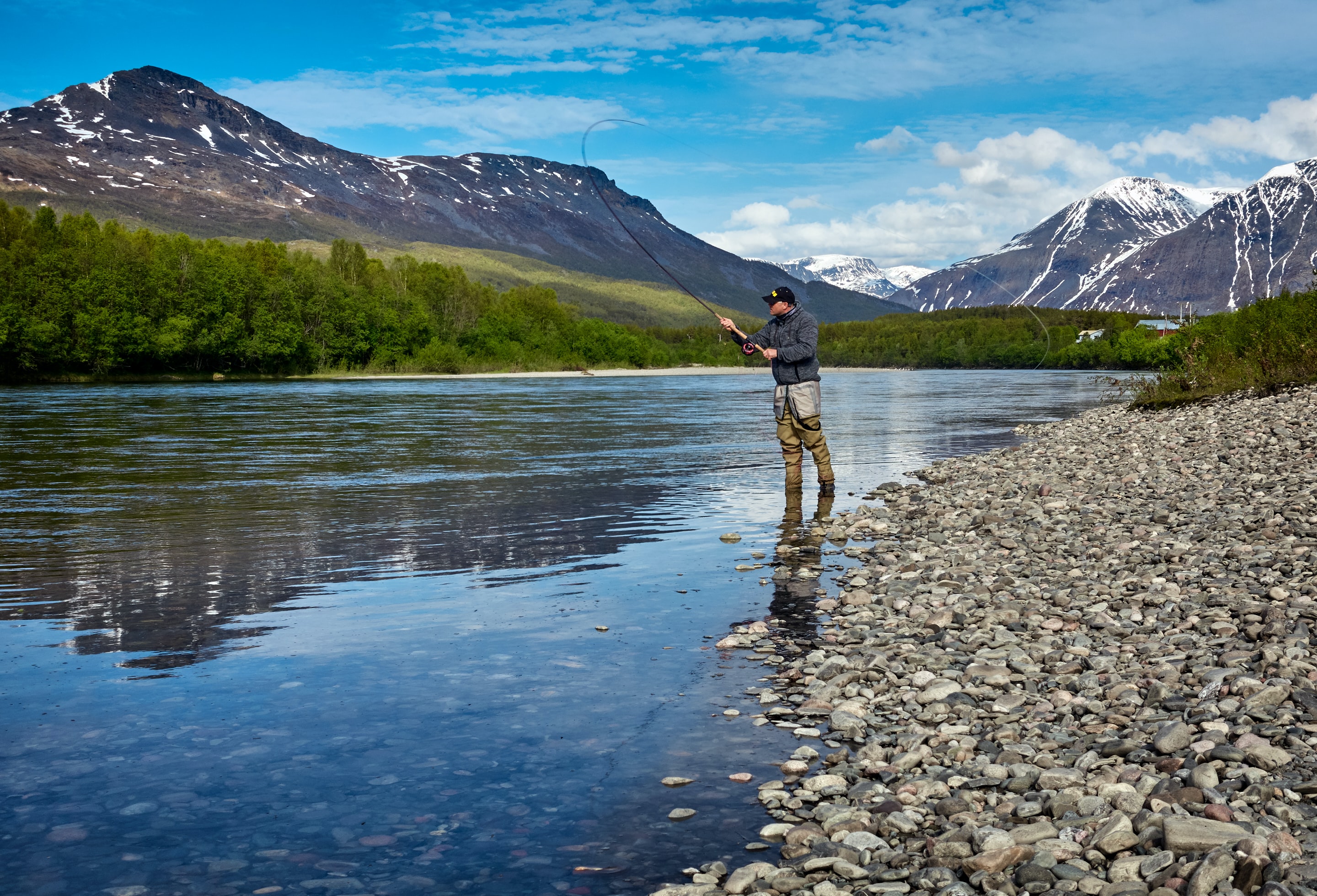 There are local drone laws that place limits on the use of drones in certain cities, towns, and municipalities. For example, the state of Alaska has a local drone law that is very regionally and seasonally specific: “In the Southeastern Alaska Area, (a) during an open commercial salmon fishing period, a person may not use an unmanned aircraft to locate salmon for the commercial taking of salmon or to direct commercial salmon fishing operations.”
There are local drone laws that place limits on the use of drones in certain cities, towns, and municipalities. For example, the state of Alaska has a local drone law that is very regionally and seasonally specific: “In the Southeastern Alaska Area, (a) during an open commercial salmon fishing period, a person may not use an unmanned aircraft to locate salmon for the commercial taking of salmon or to direct commercial salmon fishing operations.”
Because state and local drone laws can change based on necessity and use, it is important to not only adhere to the overarching federal drone regulations, but also be aware of any state and local regulations that may be in place. As with the example in Southeast Alaska, it could be a law you wouldn’t even think about because it’s so specific. Keep the rules of the sky in mind, and check with your state legislature to get the most up-to-date drone regulations.
About the Author
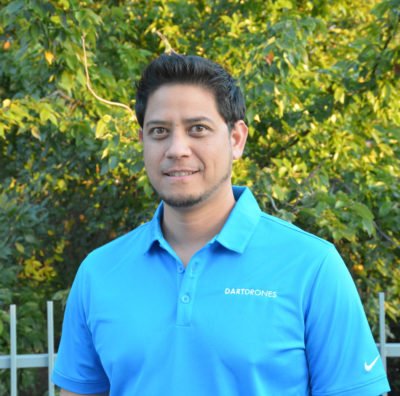 Sean has been a private pilot and commercial Unmanned Aerial Systems operator since 2015 and is an active member of the Civil Air Patrol. He is a Florida local, born in Daytona Beach and living in Orlando. After joining the Navy at the age of 19, he served a six year enlistment as a Nuclear Operator on the USS Harry S. Truman (CVN-75). Subsequent pivot points include Founder and Chief Executive Officer of Nautical Horizons, LLC, Chief Seismic Navigator for offshore oil & gas, a Masters Degree in Ocean Engineering with a design thesis, and a patent for ocean instrumentation devices.
Sean has been a private pilot and commercial Unmanned Aerial Systems operator since 2015 and is an active member of the Civil Air Patrol. He is a Florida local, born in Daytona Beach and living in Orlando. After joining the Navy at the age of 19, he served a six year enlistment as a Nuclear Operator on the USS Harry S. Truman (CVN-75). Subsequent pivot points include Founder and Chief Executive Officer of Nautical Horizons, LLC, Chief Seismic Navigator for offshore oil & gas, a Masters Degree in Ocean Engineering with a design thesis, and a patent for ocean instrumentation devices.
DARTdrones is the nation’s leader in drone training, program development and consultation, offering online and in-person courses in 40+ cities across the United States. DARTdrones takes pride in their comprehensive curriculum, developed by a former US Navy Helicopter pilot, as well as their 40+ flight instructors who are all manned and unmanned aircraft pilots. Visit us online at www.dartdrones.com, call 800-264-3907 or email the DARTdrones Team at info@dartdrones.com to learn more.
The post National Drone Laws – What are they? appeared first on DARTdrones.
]]>The post Celebrating Seven Years of DARTdrones appeared first on DARTdrones.
]]>
Unique Leadership
At the heart of DARTdrones is leadership that spans a generation. CEO and Co-Founder, Abby Speicher, and her father Chris Speicher as Chief Visionary Officer, stand together at the helm of this company.
As Seen on Shark Tank

In 2017, DARTdrones co-founder and CEO Abby Speicher was featured on ABC’s “Shark Tank” in a special episode featuring millennial entrepreneurs. At that time, DARTdrones was a fledgling company offering in-person Part 107 test prep courses only. Since then, Abby and her team have developed and expanded, added over twenty specialized courses for individuals and organizations to the curriculum.
Forbes 30 under 30 Recognition
In 2019, Abby, as co-founder of DARTdrones, was named one of Forbes 30 under 30 for enterprise technology. She is literally a force to be reckoned with!
Diverse Instruction
DARTdrones has a fleet of instructors with some serious experience behind them. From Navy helicopter pilots to Pulitzer prize winning photojournalists, and FEMA Search and Rescue to thermal drone pilots and firefighters, the team and the resources they carry with them is second to none. The aviators bring a breadth of knowledge that has become the scaffolding upon which the DARTdrones curriculum is built.
Passion for Community
DARTdrones stands firmly behind the public safety sector, having donated over $500,000 in free drone training dollars to saving lives. This is near and dear to many on the instructor team, which is honored to have Search and Rescue, firefighters, law enforcement, and retired military pilots amongst its ranks.
Real-world Experience
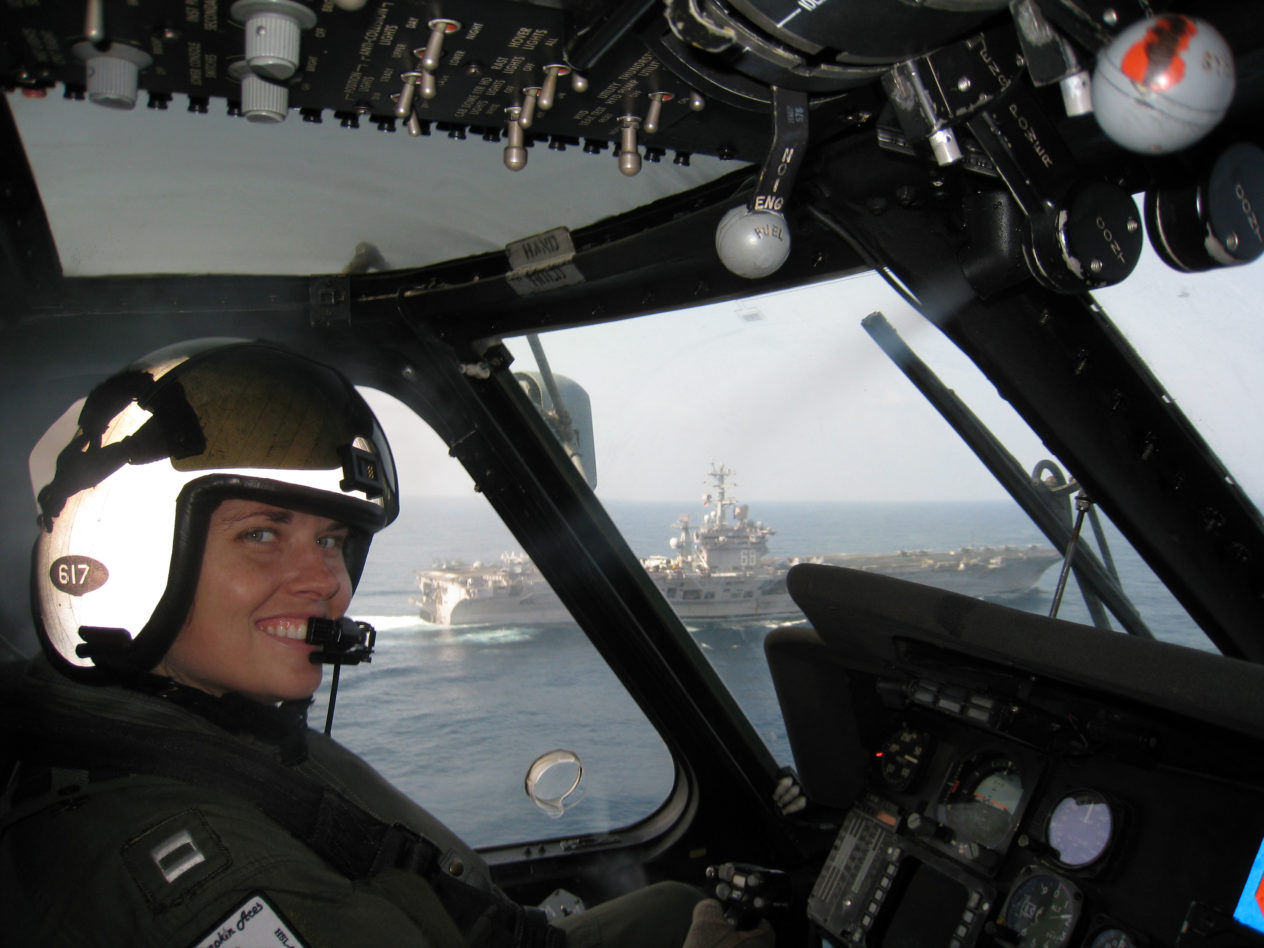 The curriculum developed for DARTdrones was built by Director of Training Amelia Owre, a U.S. Navy helicopter pilot. She also built a training program called FireScout that instructs drone pilots on how to operate near wild and urban fires.
The curriculum developed for DARTdrones was built by Director of Training Amelia Owre, a U.S. Navy helicopter pilot. She also built a training program called FireScout that instructs drone pilots on how to operate near wild and urban fires.
Empowerment and Support
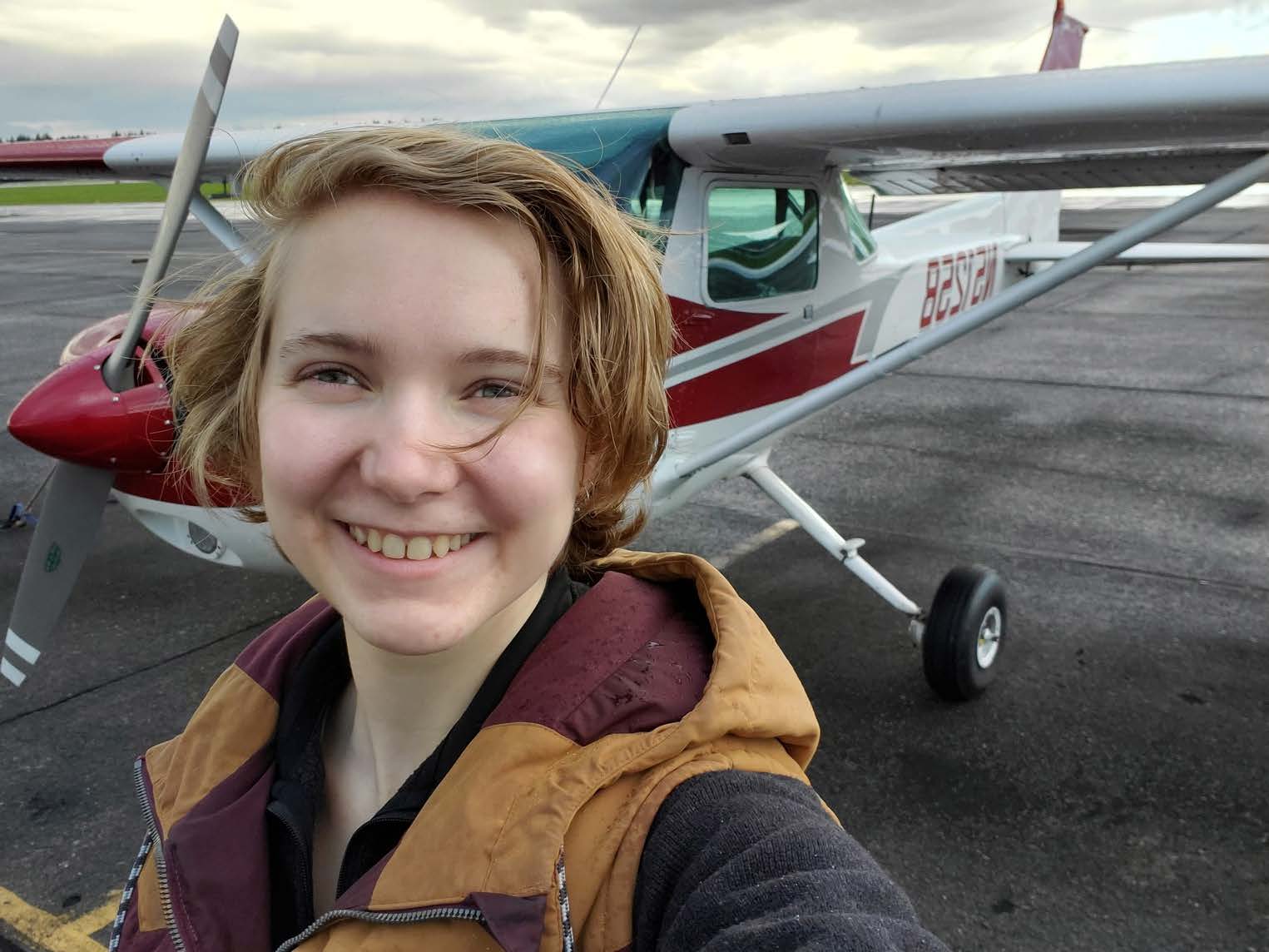 With a strong female leader, DARTdrones is passionate about encouraging women to pursue aviation, and has participated in the Wings for Val scholarship foundation for the last 4 years. In 2021, Abigail Wells was presented with the Drone Training Scholarship, and aims to use it for drone-based wildlife surveys.
With a strong female leader, DARTdrones is passionate about encouraging women to pursue aviation, and has participated in the Wings for Val scholarship foundation for the last 4 years. In 2021, Abigail Wells was presented with the Drone Training Scholarship, and aims to use it for drone-based wildlife surveys.
It truly is an honor to celebrate these seven years as leaders in drone education and entrepreneurship. DARTdrones strives to continue to elevate the standard of drone pilot training and be a steadfast ambassador for the drone industry. Above all, we’re throughly grateful for those who entrusted us with their drone training education and believed in our mission, making the past seven years possible. We couldn’t have done it without you.
About the Author
 Sarah Cavalcanti joined DARTdrones in 2021 after relocating to Salt Lake City from her hometown of Atlanta, Georgia. As the Digital Marketing Associate, Sarah is a key member of the Marketing department and manages brand, social media efforts, and DARTdrones’ strategic marketing strategies. Sarah’s enthusiasm for the drone industry began via her education, receiving a Bachelor in Fine Arts with a concentration in photography as well as a personal love of videography.
Sarah Cavalcanti joined DARTdrones in 2021 after relocating to Salt Lake City from her hometown of Atlanta, Georgia. As the Digital Marketing Associate, Sarah is a key member of the Marketing department and manages brand, social media efforts, and DARTdrones’ strategic marketing strategies. Sarah’s enthusiasm for the drone industry began via her education, receiving a Bachelor in Fine Arts with a concentration in photography as well as a personal love of videography.
DARTdrones is the nation’s leader in drone training, program development and consultation, offering online and in-person courses in 40+ cities across the United States. DARTdrones takes pride in their comprehensive curriculum, developed by a former US Navy Helicopter pilot, as well as their 40+ flight instructors who are all manned and unmanned aircraft pilots. Visit us online at www.dartdrones.com, call 800-264-3907 or email the DARTdrones Team at info@dartdrones.com to learn more.
The post Celebrating Seven Years of DARTdrones appeared first on DARTdrones.
]]>The post Summer Skies: Are National Parks a No-Fly Zone For Your Drone? appeared first on DARTdrones.
]]>Pack up your bird and hit the road, but make sure you know where you’re allowed to fly.
We’re going over the rules and regulations for flying your drones in national parks and preserves
Flying Drones in National Parks:
 The Park service released a memo in 2014 that addresses unmanned aircraft use in parks, and directs superintendents “to prohibit the launching, landing, or operation of unmanned aircraft” within park boundaries. This seeks to reduce the risk of harassing wildlife, sUAS accidents, and interrupting the peace and quiet that entices people to visit the national parks in the first place.
The Park service released a memo in 2014 that addresses unmanned aircraft use in parks, and directs superintendents “to prohibit the launching, landing, or operation of unmanned aircraft” within park boundaries. This seeks to reduce the risk of harassing wildlife, sUAS accidents, and interrupting the peace and quiet that entices people to visit the national parks in the first place.
While the National Park Service does use drones, the reasons are very specific to search and rescue, wildfire monitoring, academic studies, and aerial documentation.
Drone Usage in National Forests:
On the other hand, the National Forest Service does not prohibit drone use, so long as the drone is not operated in a designated Wilderness Area. The drone pilot must operate in accordance to FAA regulations, in addition to keeping clear of wildlife and populated areas.
The Forest Service does conduct low altitude flights within the National Forest boundaries, so knowing what flights are taking place, and whether there are temporary flight restrictions (TFRs) and NOTAMS is essential for safe drone operation within these boundaries. Check out these Forest Service drone rules for further information.

Flying Drones within Wilderness Areas:
Wilderness Areas are a no-go for drone flight, and any mechanized vehicle for that matter. It’s been that way since 1964. As stated in The Wilderness Act:
“…there shall be no temporary road, no use of motor vehicles, motorized equipment or motorboats, no landing of aircraft, no other form of mechanical transport, and no structure or installation within any such area.”
Wilderness Areas can sometimes exist within a National Forest, so be sure to use an app like Kittyhawk , B4UFly, or AirMap to be certain you’re not pushing any boundaries. If you’re operating a DJI drone, your DJI GO 4 app will alert you to any airspace issues as well.
Drones in National Wildlife Refuges:
As stated in the National Wildlife Refuge’s Code of Federal Regulations;
“The unauthorized operation of aircraft, including sail planes, and hang gliders, at altitudes resulting in harassment of wildlife, or the unauthorized landing or take-off on a national wildlife refuge, except in an emergency, is prohibited. National wildlife refuge boundaries are designated on up-date FAA aeronautical charts.”
 National Wildlife Refuges are often home or breeding grounds for endangered species that are vulnerable to harassment. While we may not be as affected by noise, these animals are acutely aware and easily frightened by such disturbances.
National Wildlife Refuges are often home or breeding grounds for endangered species that are vulnerable to harassment. While we may not be as affected by noise, these animals are acutely aware and easily frightened by such disturbances.
It is tempting to launch a drone for a quick video or photograph, but be cognizant of the area you’re flying in. Sometimes simply being present for a quiet memory is enough. As drone pilots, we have the opportunity to be ambassadors to the industry, and behaving above reproach boosts our positive image in the public eye.
Remember, there is always alternative beautiful skies to fly!
About the Author
Roger became interested in drone aviation soon after retiring from a 25-year career in the fire service. During his tenure as a firefighter with the Nashua, NH Fire Rescue, he serves as a member of the Hazmat & dive rescue teams. he is a sport pilot and Certified Level 1 Thermographer who enjoys flying weight shift control aircraft. Roger splits his time living in Naples, FL & Wells, ME; he enjoys training public service departments & assisting them with the implementation of UAS into their organizations as well as using drones to film at live events.
DARTdrones is the nation’s leader in drone training, program development and consultation, offering online and in-person courses in 40+ cities across the United States. DARTdrones takes pride in their comprehensive curriculum, developed by a former US Navy Helicopter pilot, as well as their 40+ flight instructors who are all manned and unmanned aircraft pilots. Visit us online at www.dartdrones.com, call 800-264-3907 or email the DARTdrones Team at info@dartdrones.com to learn more.
The post Summer Skies: Are National Parks a No-Fly Zone For Your Drone? appeared first on DARTdrones.
]]>The post What Do I Learn In A Drone Class? appeared first on DARTdrones.
]]>Whatever your drone piloting goals are, DARTdrones drone training can give you the skills to fly drones confidently. Customizable drone classes offer hands-on instruction for commercial pilots, hobbyists, government agencies, public safety workers, and anyone else interested in becoming a safe and effective drone pilot.
Basic Drone Class
In our Basic Flight Training Course, expert instructors provide both in-person and online training covering standard operating procedures, program software, emergency response, and systems management.
Get to know your drone inside and out and develop your functional skills through scenario-based exercises and mission-specific drone training. Test your knowledge through pilot assessments and lesson reviews. Hone your piloting skills and learn how you can use your drone to start a side gig or embark on a new career.
Here are some of the ways taking a drone class can benefit current or future drone pilots:
Protect your equipment
You’ve put a good deal of money into your drone equipment, and you want to protect your investment. Our expert teachers provide detailed step-by-step instructions on how to fly safely and effectively so you can confidently fly your drone without risking damage to your craft.
Understand your drone’s operating system
Today’s drones use advanced technology for a wide range of uses. Learning to use this technology can be intimidating for new users, and many novice drone pilots don’t know how to take advantage of all of a drone’s features. Our drone class teaches students how to use intelligent navigation modes for advanced drone operation.
Be prepared in case of emergency
Accidents happen, but you can reduce the risk of damage or injury resulting from a malfunction, operator error, or circumstances outside your control by learning how to respond correctly in an emergency. Our drone class helps you prepare by presenting various emergency scenarios and letting you practice real-time responses with your personal drone equipment.
Develop a side gig or embark on a new career
Did you know skilled drone pilots can use their equipment and experience to make good money? Whether you’d like to develop a side gig for extra income or you’re thinking about embarking on a new career path, you can use the skills you learn in drone class for a wide range of industries, including:
- Photography and videography
- Surveying and mapping
- Agriculture management and planning
- City development
- Building inspections
- Emergency services
- Military contracting
- And much more
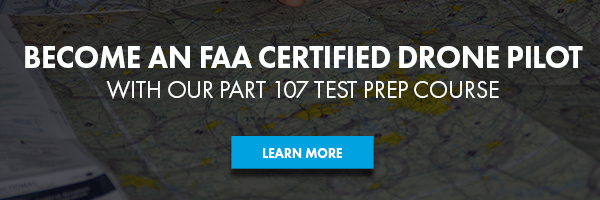
What You’ll Learn In Drone Class
Drone basics
Discover the various system platforms and their components so you can choose the best systems for you. Get to know the primary drone types, how to set up and update your drone’s operating system, and learn how to navigate your flight display like a pro.
Real-time navigation
In our drone class, you’ll prepare for your first flight with a complete flight walk-through. You’ll learn how to calibrate a drone compass, use in-flight stick commands, how to log your flights, and which flight modes to use so you can confidently launch and land your drone safely and smoothly.
Rules and regulations
Federal and municipal rules regarding drone flight, like maximum altitude, are in place to ensure pilots’ safety and security of both unmanned and manned aircrafts, military airspace, and innocent bystanders on the ground. Breaking these rules can lead to severe consequences, including potential injury, fines, and jail time. Drone class covers these rules and regulations and how to adhere to them while flying your drone.
Advanced Training
Take your drone piloting skills to the next level with the DARTdrones Top Level Remote Pilot Certification course. Certified TOP Operators are the most competent commercial pilots in their industry, recognized for professionalism, competence, reliability, and commitment to safety and ongoing training.
As one of the developers of the Trusted Operator Program , DARTdrones provides a targeted, comprehensive path for all aspiring drone pilots. Our expert team of 40+ instructors are professional pilots with a combined 12,000+ hours of drone pilot training and experience.
, DARTdrones provides a targeted, comprehensive path for all aspiring drone pilots. Our expert team of 40+ instructors are professional pilots with a combined 12,000+ hours of drone pilot training and experience.
Call or email DARTdrones today to learn more about how our drone classes can take your piloting skills to the next level.
About the Author
Mike is an instrument-rated pilot and a self-described transportation enthusiast and weather geek. As a former light rail instructor for Harris County Metro, Mike trained new operators to safely operate trains on Metro’s new rail extensions in the city of Houston. Mike returned to Austin and discovered Drone photography. Taking his new hobby to the next level by combining his aviation, rait trainer, and industrial sales experience, Mike Joined DARTdrones to share his passion for aviation with student drone pilots to help them become safe, competent and confident drone pilots.
DARTdrones is the nation’s leader in drone training, program development and consultation, offering online and in-person courses in 40+ cities across the United States. DARTdrones takes pride in their comprehensive curriculum, developed by a former US Navy Helicopter pilot, as well as their 40+ flight instructors who are all manned and unmanned aircraft pilots. Visit us online at www.dartdrones.com, call 800-264-3907 or email the DARTdrones Team at info@dartdrones.com to learn more.
The post What Do I Learn In A Drone Class? appeared first on DARTdrones.
]]>The post DJI Tightens Data Security for Commercial and Government Drone Pilots appeared first on DARTdrones.
]]>The announcement came after the U.S. Army banned DJI products over cyber security issues. Brendan Schulman, vice president of policy and legal affairs at DJI, told the New York Times this was not a result of the Army cease. Schulman said the company has been developing this feature for quite some time, but will be releasing it sooner than planned. “The Army memo caused customers to express renewed concern about data security” and prompted DJI to speed up data security changes, Schulman said.

What is Local Data Mode?
Local Data Mode will be a positive feature for operators who do not wish to share any flight information. This will be especially beneficial for commercial drone pilots and government drone pilots operating over sensitive sites like military bases, police barracks, prisons and new business projects. DJI said it does not collect images, videos or flight logs from operators unless they choose to share them. This feature will prevent any accidental syncing with DJI servers.
“We are creating Local Data Mode to address the needs of our enterprise customers, including public and private organizations that are using DJI technology to perform sensitive operations around the world,” said Schulman.
However, there will be a downside to the increased security feature. When using Local Data Mode, DJI apps will not update maps or geofencing information. Pilots will choose to give up the ability to be notified of newly-issued flight restrictions or software updates. But it seems that many will be willing to abandon these regular features for the increased data security.
“DJI is committed to protecting the privacy of its customers’ photos, videos and flight logs. Local Data Mode will provide added assurances for customers with heightened data security needs,” said Schulman.
DJI plans to update its controller applications by the end of September. Local Data Mode may not be available in all countries or areas that require operators to have the most updated maps and information.
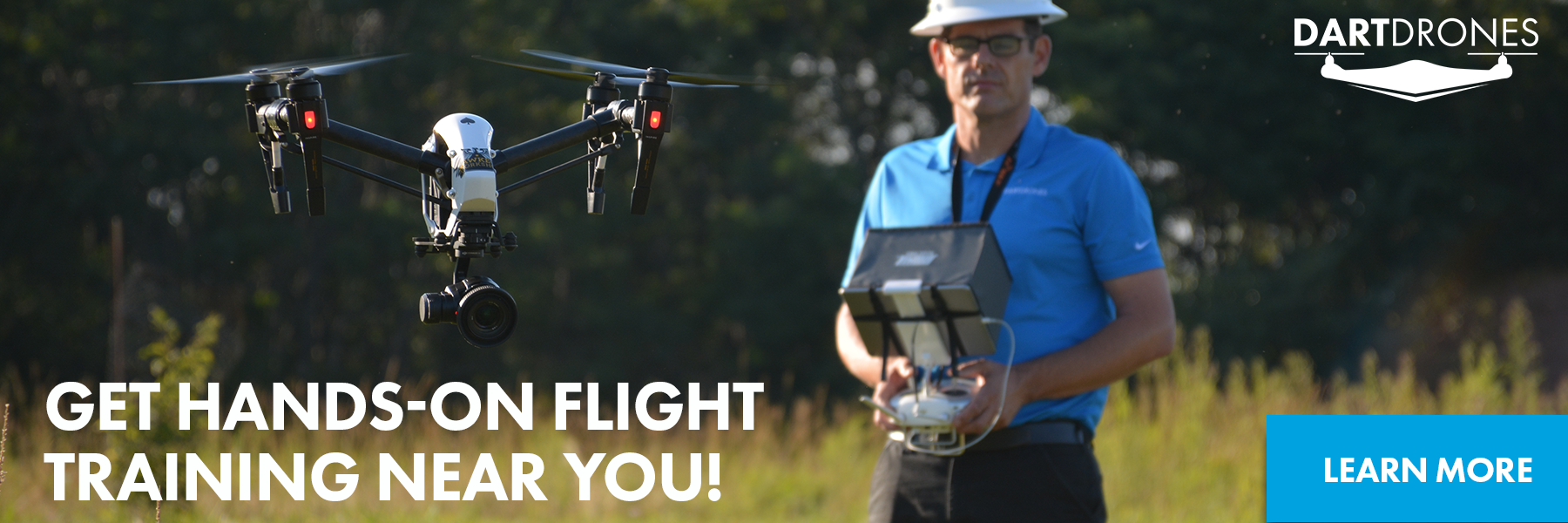
Why did the Army ban DJI products?
On Aug. 2, 2017, the Army called for units to discontinue use of DJI equipment. The Army memo was first published by sUASnews on Aug. 4. “Due to increased awareness of cyber vulnerabilities associated with DJI products, it is directed that the US Army halt the use of all DJI products,” said the memo.
The Army has not provided the public or DJI with a concrete reason for the cease, but general assumptions would be the Army did not feel comfortable using drones for sensitive operations made by a foreign company. DJI was caught off guard by the Army’s decision and it seemed to think the ban was abrupt and unwarranted. DJI is not entirely concerned because military use is not the company’s core target market.
DJI moving forward
DJI plans to move heavily into the enterprise market. The Inspire 2 is more versatile than previous models and has the capability to perform true cinematic work. The latest $20,000+ Matrice series and associated software, combined with the new Local Data Mode feature, are sure signs of the company’s interest in the commercial market.
“We are pleased about how rapidly DJI’s customer base has expanded from hobbyists and personal drone pilots to include professional, commercial, government and educational users,” said Victor Wang, DJI director of safety technology. “As more of these customers have asked for additional assurances about how their data is handled, DJI has moved to address their needs by developing local data mode to provide enhanced data management options for customers who want to use them.”
Of course, the company will continue to make consumer favorites like Mavic, Phantom, and Spark, but do not be surprised to see it further its development in the commercial market.
Learn More!
The implementation of Local Data Mode will help commercial drone programs and government drone programs. DARTdrones offers Part 107 and drone training to get you prepared to fly a commercial drone. Visit www.dartdrones.com or call us at 800-264-3907 to learn about our drone courses.
The post DJI Tightens Data Security for Commercial and Government Drone Pilots appeared first on DARTdrones.
]]>The post Drone Journalism Q&A with Industry Pilot Devon Dewey appeared first on DARTdrones.
]]>Devon Dewey, the Deputy Managing Editor and Chief Drone Pilot for KSL.com in Salt Lake City, Utah, spoke with us about the positive benefits that drones have for journalists, as well as some of the mistakes journalist make when operating their drone
At KSL, Dewey is in charge of selecting which stories go online, editing pieces, and operates a drone to gather aerial videos/images to accompany online stories.
How did you get involved in drone journalism?
I flew drones as a hobbyist for a while before the Part 107 certification came out. Once that came out – I jumped on the opportunity in order to better tell stories and give viewers a bird’s eye view for stories we cover.
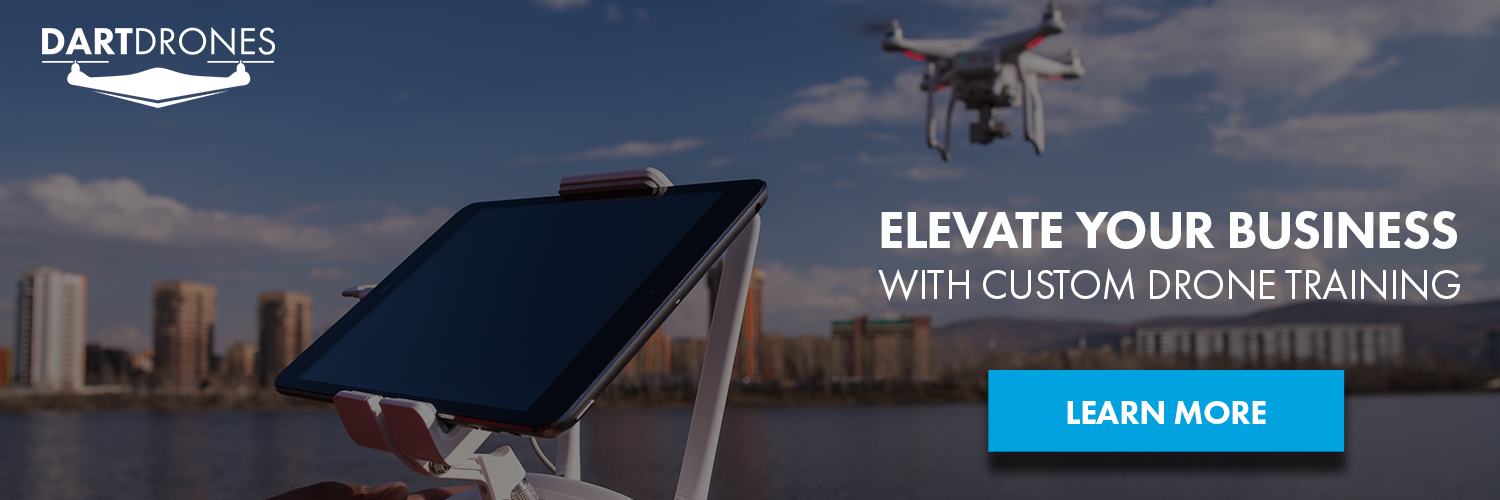
What about adding a drone to your work has helped you the most?
The ease of being able to deploy a drone. The cost is nowhere near the cost of a news helicopter and it doesn’t take an expensive crew to operate. Many are small enough to fit in a small case and allow you to get amazing shots and views of stories that you are covering
What other benefits do drones bring to the journalism industry?
Drones help journalists in the field to get a better view of the story they are covering. Drones do not make sense for every story, but a lot of stories benefit from a better perspective of what is being talked about. For example, we covered a story about 40 homes in a neighborhood that were slowly sinking. It helped to fly high above the neighborhood to show what a large number of homes that really was. Drones also give journalists a better idea of what is going on when police corner off streets, allowing them to see a crime scene and start putting together the pieces of the puzzle. We have also used drones to highlight some of the beauty of our local state parks as well as showcasing a hike from our Hike of the Week articles.
What is the biggest mistake new drone journalists make?
Not knowing how to handle various situations when they arise out in the field. I was able to practice on my own to learn what to do if my drone begins to act erratically, when I lose connection when I accidentally lose sight of it, etc. So if problems arise when I’m flying for a story – I’ll know how to correct it before crashing.

How important is proper drone training for journalists?
Incredibly important. There is already a lot of distrust of the media and a lot of bad press about drones that make the combination of the two a scary thing for the public. If journalist drone pilots aren’t trained and are crashing and flying recklessly, it affects both the drone and journalism industry, which neither industry needs. Journalist drone pilots need to know their stuff while out covering stories to make sure each flight is a safe, successful flight.
Are journalists who are not using drones falling behind?
I think so – unless they have a helicopter. Many stories benefit from aerial video/photos and if other news organizations in your market are using them and you aren’t, that will show.
Should journalists get involved in drone journalism?
Yes, but they should know what they are getting into. Drone journalism isn’t for everyone. “One-man-band” journalists should not attempt to go live and talk about what is going on all while flying the drone by themselves. They need to know safety and ethical guidelines before taking to the skies. If they can incorporate flying a drone into their routine of covering the news, then it will be a great asset in bringing more engaging visuals into their story.
Interested in drone journalism?
DARTdrones new Drone Journalism Workshop was designed with journalists needs in mind. This Workshop will teach you how to safely and effectively maneuver your aircraft to gather news data. Also, students will learn how to obtain the necessary waivers through the FAA to avoid costly penalties and fines.
DARTdrones is here to help! Whether you need Part 107 Test Prep, In-Person Flight Training, or Drone Consultation Services to ensure your flight operations are properly organized and run smoothly, our expert team of sUAS professionals are ready to help launch your organization’s drone program. Check out www.dartdrones.com or call 800.264.3907 to learn more information.

The post Drone Journalism Q&A with Industry Pilot Devon Dewey appeared first on DARTdrones.
]]>The post Insurance Inspection Drones Can Benefit Companies During Natural Disasters appeared first on DARTdrones.
]]>Insurance claims adjusters know a thing-or-two about high-risk jobs. They perform on-scene investigations of accidents, fires, crimes and property damages to determine what is or what is not covered by the insurance provider. Natural disasters are a huge problem for insurance companies in general, but for the claims adjuster on the ground, the aftermath of these terrible events makes for a treacherous workspace.

Insurance inspection drones and safety
Insurance companies will no longer have to put agents in harm’s way after natural disasters. Now, claims adjusters can use insurance inspection drones to investigate damages caused by these events from a safe distance. Previously, insurance companies had to send an adjuster to the scene of a disaster with only a digital camera. These adjusters would have to investigate unsafe structures, hazardous materials, or loose electrical wiring.
No longer will investigators need to risk falling from a ladder, trudging through murky water, or injuring themselves on the job. Inspection drones provide on-scene investigators with a bird’s eye view. Instantly, investigators can document the magnitude of the situation and perform accordingly. The pilot can maneuver the drone into risky environments or locations that are not safely reachable by humans.
Claim adjuster drone pilot
An adjuster can not simply buy a drone and take it to a scene before accomplishing a few steps. First, the pilot must become FAA Part 107 certified to fly an insurance inspection drone for commercial use. Second, it is a very important for the pilot to receive drone flight training. It is likely that a pilot investigating natural disaster scenes will face difficult flying conditions. Also, investigating property for insurance purposes is a specific task that only the trained eye knows what to look for.
Cost effective addition
Not only will drones cut down on the risk of employee injury and compensation, but they will save money on equipment. Inspection drones, for these types of situations, can be purchased for $1000 and up. Most drones today carry high-quality cameras with HD and 4k capabilities that provide insurance investigators with clear photographs of whatever they are examining. This takes away the risk of having to replace equipment that was damaged due to being dropped or damaged on the scene.

An insurance drone is a far cheaper and safer method than a manned helicopter or airplane. Also, drones can be equipped with thermal imaging cameras and operate in low-visibility conditions that manned aircraft could not. The size and weight of these devices make them a lot more versatile. The majority of these insurance drones can be transported in a small carrying case. This means that numerous agents can transport these devices to a scene and cover more than one claim at a time. More claims being covered at once means that insurance companies can settle claims at a faster rate.
Learn more
We are here to help. Our expert instructors care about providing the most up-to-date training. We offer Part 107 test prep and drone flight training programs for people of all skill levels. Our UAV beginner courses are great for anyone who is new to the industry and looking to get started. We also offer unmanned aircraft advanced training courses for the more experienced pilot or anyone looking to learn a specific trade. Check out DARTdrones or call 800.264.3907 to learn more information.

The post Insurance Inspection Drones Can Benefit Companies During Natural Disasters appeared first on DARTdrones.
]]>The post Will Drones Replace Insurance Claims Adjusters? appeared first on DARTdrones.
]]>No, drones will not be replacing claims adjusters. Instead, they will become a new tool in the insurance claims adjusters’ toolkit. Many adjusters are now becoming Part 107 certified drone pilots and using unmanned aircraft to assist them on the job. Here are a few reasons why drones will not replace insurance claims adjusters.
Human sense of insurance claims adjusters
Sight, touch, smell, hearing, and taste – the beautiful things that make us human. Taste doesn’t really apply here…but I guess it can in certain situations? Eyesight is shared with our robotic friends. Drones carry amazing cameras that can capture beautiful aerial photography and stream video instantly, but they do not have the eye of an insurance claims adjuster.

Becoming an insurance claims adjuster is no easy task. First, you need to earn a high school diploma, then a college degree, then you need to study, then you need to pass your state exam, and then you can become licensed.It takes years to develop the keen eye for detail that insurance claims adjusters have. Yes, the technology and capabilities of drones are advancing, but any good insurance claims adjuster knows that the rarer the claim, the bigger the reward.
Unnamed aircraft also lack the other senses that make insurance claims adjusters good at their jobs. For instance, the vast majority of drones cannot feel a weak floorboard crack beneath it, recognize distinct smells like a gas leak, or hear water dripping from a leaky pipe.
UAV limitations and restrictions
As advanced and beneficial as they are, drones are only equipment – and equipment can break. Although most modern drones are known to be pretty reliable; they are built of thousands of little moving pieces that rely on each other to work. A malfunction in one section of the drone can bring the entire device to a halt.
Also, drones operate on changeable battery power and batteries will die. Replacement batteries are relatively cheap and people tend to carry spares but we are human and we forget things. Malfunctions or drained batteries in the remote viewing device (i.e. iPad, iPhone, Android, etc.) may also render your drone useless in the field. Insurance claims adjusters must still be able to complete the job if their drone no longer works.

Drones can’t fly anywhere and everywhere. Insurance claims adjusters must have the proper UAV certifications, such as the FAA Part 107, and proper drone flight training to operate their aircraft. They must also know the airspace they are flying in. Property near airports, government agencies, and/or military bases may be restricted for drone flight unless the operator has the appropriate waivers. These types of waiver are not typically easy or timely for drone pilots to obtain.
Looking upward
Unmanned aircraft will not replace the insurance claims adjuster but become a trusted tool. Drones do offer many amazing safety benefits to an adjuster and may even replace their ladders, but not their jobs. A licensed insurance claims adjuster with proper FAA drone certifications and UAV flight training is a fantastic combination for companies across the country. Together, they will change the entire insurance industry.
DARTdrones is here to help! Whether you need Part 107 Test Prep, In-Person Flight Training, or Drone Consultation Services to ensure your flight operations are properly organized and run smoothly, our expert team of sUAS professionals are ready to help launch your organization’s drone program. Check out www.dartdrones.com or call 800.264.3907 to learn more information.

The post Will Drones Replace Insurance Claims Adjusters? appeared first on DARTdrones.
]]>The post Drone Jobs Exist And Pay More Than You Think appeared first on DARTdrones.
]]>First, before you even think about making a dime in the sky, you need to get your Part 107 certification. Already have it? Great – read on! Don’t know what this is? No worries – visit DARTdrones for all the answers and get flying!

The Federal Aviation Administration (FAA) estimates that the drone industry will have an economic impact of $82 billion and create over 100,000 jobs by 2025. That’s a lot of money and a lot of drone pilots. But what kind of drone jobs are there and how much do they pay?
Drone jobs for beginners
We see a lot of new drone entrepreneurs starting their careers in real estate photography. Pilots have either been doing free-lance photography for multiple real estate companies or contracting with one company. We have heard feedback from former students that they can make $250 – $500 per house for simple aerial photos, and $500 or more for aerial photos plus a short video.
Aerial photography, in general, is a booming market for drone entrepreneurs. Wedding and event photography is a very popular industry right now but pricing varies on hourly work and the photographer’s self-set costs.
Get more money
Contract work is a great way to make money with a drone. These types of jobs can net anywhere from $2,000 – $15,000 per job, based on the pilot’s experience, equipment, and the task at hand. Companies that hire drone pilots for this kind of pay are oil companies, wind farms, landfills, construction sites, energy companies, etc. Most of the time, companies will task the pilot with taking specific aerial pictures or conducting aerial inspections of equipment or structures. It is important to know FAA regulations and laws before taking on any of these types of jobs.

Advanced drone jobs

How does $50,000 – $70,000 flying a drone sound? According to a CNBC interview with Jordan Rising, director of flight and technology at the commercial drone pilot outsourcer Flight Evolved, companies involved with engineering, surveying and inspections are hiring pilots for upwards of $50,000. But these jobs aren’t typically handed out to novice pilots. Instead, most of this work is given to experienced manned pilots or those who received advanced training or certifications.
Yes, you can get even MORE money
Drone racing is a rapidly evolving tech sport. Over 28 million people tuned into ESPN’s coverage of drone racing. Pilots in this profession make various amounts of money by competing and winning races. Big technology companies have handed out $100,000 contracts and sponsorships to proven drone pilots. The crazy thing is, this sport has just begun to gain popularity.
Other ways to make money with a drone
If inspections and racing aren’t really your speed, you can make a good chunk of change creating films. The New York City Drone Film Festival is offering a $5,000 grant to directors each month for films. Before you know it, Hollywood will be hiring lots of drone pilots to capture beautiful aerial shots for large blockbuster films.

What are you waiting for?
Now is the perfect time to get involved in the drone revolution. The FAA predicts that there will be over 420,000 commercial drone pilots by 2021, compared to only 42,000 in 2016. The first step you need to take is preparing for your Part 107 exam. Then you need to learn to fly your drone with proper flight training. Finally, you need to start your drone business and begin making money!
Start with DART
We are here to help! We offer Part 107 test prep and flight training programs for people of all skill levels. Our beginner courses are great for anyone who is new to the industry and we’ll even teach you how to launch your own drone business. We also offer advanced training courses for the more experienced pilot or anyone looking to learn a specific trade. Check out our website or call 800.264.3907 to learn more information.
The post Drone Jobs Exist And Pay More Than You Think appeared first on DARTdrones.
]]>The post Drone Academy: Why Participate and What Do You Learn? appeared first on DARTdrones.
]]>There are several reasons why you should attend a drone academy. Perhaps you are an experienced drone pilot and need help preparing for the new Federal Aviation Administration (FAA) Part 107 knowledge test. Perhaps you received a drone as a gift and you want to gain the skills and knowledge required to confidently fly your new drone. Maybe you want to use a drone for business purposes or want to learn about the advanced features of your drone. Whatever your reason for attending a drone academy, below is a list of topics you will learn at a drone school.
Prepare for the FAA Part 107 Knowledge Test
Can you describe a standing lenticular cloud? Do you know how to decode a METAR (aviation routine weather report)? Are you familiar with reading sectionals and other aeronautical charts? At first glance, these questions might not seem directly applicable to drone pilots, but those questions are just a few examples of the aviation knowledge required to pass the FAA’s new aviation knowledge test under Part 107. The FAA’s new rule for small unmanned aircraft systems (sUAS), commonly called drones, went into effect in late August of 2016. This new rule, known as Part 107, requires you to obtain a remote pilot certificate to operate your drone for work or business purposes (unless you choose to operate under an existing Section 333 grant of exemption). Drone pilots who fly their drone for fun, do not need a remote pilot certificate. However, it is a good idea to have at least a basic knowledge of FAA regulations and aeronautical knowledge.
Topics covered in Part 107 Prep Courses
If you don’t already hold a current FAA pilot certificate for manned aircraft, you will have to pass a 60-question, multiple choice, aeronautical knowledge test to obtain your remote pilot certificate. The Part 107 test covers many areas of aeronautical knowledge including:
- Applicable regulations to drone operations
- Aviation weather
- Crew resource management
- Airspace classifications
- Emergency procedures
- Reading aeronautical charts
- Effects of drugs and alcohol
- Special use airspace
- Drone Maintenance
Do I Need to Have a Manned Aircraft License?
The questions on the aeronautical knowledge test can be challenging if you don’t have an aviation background. In fact, many of the questions on the Part 107 knowledge test are very similar to the questions on the private pilot knowledge test, but most private pilots get hours and hours of ground school training to prepare for their knowledge test in addition to a minimum of 40 hours of flight time! Attending a drone academy can help you prepare for and pass your Part 107 knowledge test on the first try.
If you don’t have a strong aviation background, a drone academy can help you understand or brush up on the aeronautical knowledge required to pass the test. DARTdrones offers drone courses specifically designed to help you understand and study the material on the Part 107 knowledge test. At DARTdrones, all of our drone instructors are experienced, FAA certified pilots of manned aircraft, as well as drone pilots, so you will receive expert instruction on the aeronautical knowledge required to pass your FAA Part 107 remote pilot knowledge test. All DARTdrones Part 107 test prep courses come with access to a 300-question bank of actual Part 107 questions to help you study for your Part 107 knowledge test.
Check out the FAA Test Prep section of DARTdrones.com to view our Part 107 test prep drone courses. In addition to in-person Part 107 test prep courses, available in over 25 cities in the U.S., DARTdrones also offers online Part 107 test prep courses. However, if you attend an in-person Part 107 test prep course through DARTdrones, you also receive access to the online Part 107 test prep content.
Drone Pilot Training for Recreational Pilots
What if you’re a recreational drone pilot and not planning on taking the Part 107 knowledge test and getting your remote pilot certificate? Is there any value in attending a drone academy? Of course! Recreational drone pilots and commercial drone pilots, can take in-person drone training on DJI Phantom and Inspire drones. A typical full-day drone course at offers academic drone classes as well as two sessions of drone flight training.
What’s included in Drone Platform Training?
- Rules and regulations for different types of drone pilots
- Basic flight controls
- Emergency procedures
- How to navigate the DJI Go App
- How the intelligent flight modes
- How to be sure your drone, remote controller, and batteries have the latest firmware
- How to complete firmware updates
Build Your Drone Flying Confidence
The flight training sessions in a drone academy let you build your drone flying confidence in a safe environment with experienced instructors available to answer your questions. Instructors will walk you through the flight experience from takeoff to landing, including navigating the features and menus of your DJI Go App. It is not very difficult for even inexperienced drone pilots to fly their drone a couple of hundred feet in the air, well clear of any trees or obstacles. However, the most challenging environment for drone pilots is when they are maneuvering at lower altitudes, relatively close to obstacles, such as during a commercial photo shoot or when maneuvering for landing if you’re flying recreationally.
Drone flying sessions incorporate a course that is specifically designed to improve your low altitude maneuvering skills and includes practice flying First Person View (FPV). However, safety is a top priority, so you will be well clear of any obstacles or people when flying the drone course. The second flying session covers the Intelligent Navigation Features of the DJI drones. Drone flight training sessions also include the Point of Interest (POI) mode. This feature lets you select a point, and then the drone will automatically orbit the point at your desired radius and speed when you activate this mode. The drone camera always faces the point as it makes it orbit, so one typical use of the POI mode is to provide orbiting videos of a house for sale in the real estate market. You will learn how to activate the POI mode in your DJI Go App, change the mode settings (like radius and speed), and get practice flying the POI mode.
Bonus Benefits of Attending a Drone Academy
An added benefit of attending a drone academy, is the opportunity to develop a camaraderie with fellow students who are excited to be a part of the relatively new drone industry. If you are interested in starting a drone business or using your drone for other commercial purposes, you might even find a drone course to be an excellent networking opportunity!
If you think a drone academy is a good fit for you, check out our full list of drone course offerings at DARTdrones.com.
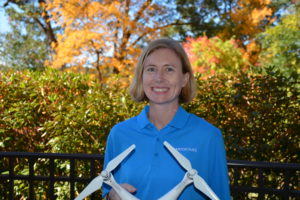 About the Author: Becky Hagner is an FAA certified commercial helicopter and fixed wing pilot and a DARTdrones Flight Instructor. She is a former military pilot and graduate of the United States Navy Test Pilot School. She enjoys traveling with her husband and two daughters and owns an aerial photography business.
About the Author: Becky Hagner is an FAA certified commercial helicopter and fixed wing pilot and a DARTdrones Flight Instructor. She is a former military pilot and graduate of the United States Navy Test Pilot School. She enjoys traveling with her husband and two daughters and owns an aerial photography business.
The post Drone Academy: Why Participate and What Do You Learn? appeared first on DARTdrones.
]]>